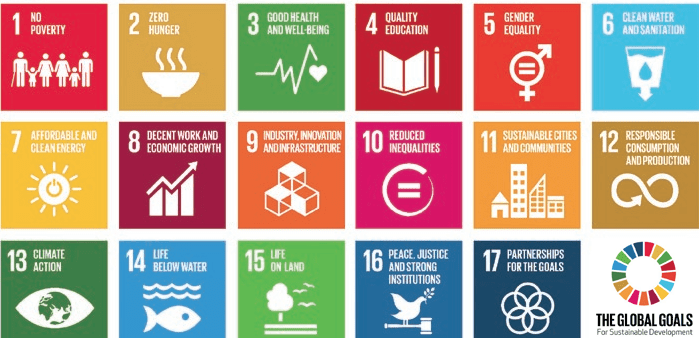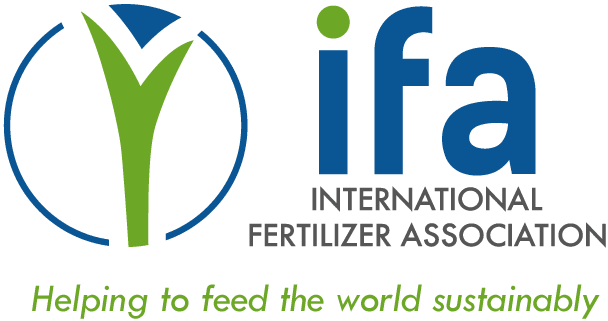Sustainable Development Goals
An urgent call to action.
The 17 United Nations’ Sustainable Development Goals (SDGs) are the culmination of decades of international cooperation between countries and various stakeholders, representing a global consensus on mankind’s most pressing issues, as more than 180 countries have committed to tackling these concerns in an urgent manner.
The SDGs form the core of the United Nations’ 2030 sustainability agenda, and provide critical guidance to businesses, governments and society as a whole to develop high-impact actions in the coming years and decades. Each Global Goal provides specific targets to help monitor progress towards achieving the overarching goals of preserving humanity and protecting the earth’s resources.


Plant nutrients can help to lift farmers out of poverty.
No farm in the world is too small to use fertilizers, and they can significantly increase farmers’ incomes.
Adequate and affordable access to fertilizers allows subsistence farmers to produce a surplus that they can sell, using the income to not only buy additional food for their families, but also send their children to school and pay for health care. The impact of fertilizers is immediate: within a single cropping season, and with the adequate use of other crop inputs (e.g. water), farm productivity can be doubled or even tripled in regions with low yields such as sub-Saharan Africa. For every kilogram of nutrient applied, farmers can obtain from five to 30 additional kilograms of product.
Fertilizers contribute to better nutrition for all through micronutrients.
Currently, more than 2 billion people, mostly in developing countries, suffer from micronutrient malnutrition, sometimes referred to as “hidden hunger”. Micronutrient-enriched fertilization is considered one of the most promising ways to fight malnutrition, and to alleviate nutrient deficiencies worldwide, especially for zinc, selenium and iodine.

Half the food we eat today is produced thanks to mineral fertilizers.
Fertilizers provide crops with the essential nutrients for their growth and health, helping to increase crop yields and lift overall food production. Fertilizers are used in every corner of the globe to support sustainable agricultural production and food security. When applied using Best Management Practices, mineral fertilizers can fulfill their primary function of providing plants with consistent and easily available nutrients more efficiently, while minimizing the negative effects of over-, under- or misuse. The “4R” principles of nutrient management refer to applying the right source of nutrients, at the right rate needed to optimize yields to a specific crop; at the right time they are needed by the crop; and at the right place in the field; and are applicable to each country and region worldwide. The 4R model has allowed farmers in various regions of the world to sustainably increase their yields, incomes and livelihoods.

Fertilizers can increase gender equality in agriculture.
Gender at IFA:
IFA has formed a Gender Diversity Taskforce dedicated to exploring how diversity could be a powerful transformative tool for the agricultural sector, the agribusiness industry and the fertilizer industry in particular. Building on already existing gender-related initiatives of selected IFA member companies, the Taskforce is undertaking several activities that serve the objectives of:
- Raising awareness of achievements where women in the industry have shown outstanding leadership and vision
- Increasing the visibility of particularly successful gender diversity initiatives and programs in the industry (and possibly also in other business or industry settings) to facilitate exchange and mutual learning
- Including men and their contribution to promoting gender diversity
The Gender Diversity Taskforce will also dedicate efforts to alert on the gender gap in agriculture and on the farm by communicating on the critical role of women for the sustainable food system.
4R SOLUTION PROJECT for women.
Developed by Fertilizer Canada, in partnership with Co-operative Development Foundation of Canada (CDF Canada), the African Plant Nutrition Institute (APNI) and with the support of three IFA members (Nutrien, OCP and IRM), the 4R Solutions Project promotes the empowerment of women farmers, with special emphasis on improving access to financial resources and agriculture technologies. The project aims to improve the socio-economic well-being and resilience of 80,000 smallholder farmers, particularly women, in Ethiopia, Ghana and Senegal.


Nutrient losses to water can be significantly reduced with fertilizer best management practices.
The knowledge of agricultural nutrient cycles and their loss pathways is essential to reducing losses to water, which may occur through soil erosion and runoff of particulate matter. Nitrogen (N) and phosphorus (P) cycles are complex biological cycles and, by definition “leaky” systems. N and P losses can be minimized through the application of fertilizer, crop and soil best management practices, including the “4R” principles.
Responsible water management at fertilizer production sites.
The sustainable management of water is a priority at fertilizer production facilities globally. Manufacturers closely monitor and adjust their water consumption to ensure that losses are minimized, while recycling whenever possible. All over the world, fertilizer manufacturers operate plants that can recycle up to 100% of their water consumption, saving millions of cubic meters every year.


The manufacture of fertilizers is moving towards a greener future.
IFA members around the world, along with academic institutions and R&D centers, are pioneering new technologies to produce ammonia—the main raw material for the production of nitrogen fertilizers—entirely from sustainable, carbon neutral inputs such as biomass or renewable electricity. With a number of pilot projects currently in operation, the transition from fossil inputs to electric inputs has already started. Several fertilizer companies have achieved an industrial symbiosis by using hydrogen by-product left over from other industrial processes to produce “carbon-free” ammonia. Existing ammonia plants are also incrementally de-carbonizing their ammonia production by introducing a hydrogen pipeline connection during revamps, thereby reducing their reliance on fossil fuels. Several partnerships with energy and technology providers are also making possible the development of pilot plants to produce hydrogen and ammonia from renewable electricity sources all over the world.


Towards a circular economy model.
Phosphate producers are actively pursuing new methods of recycling phosphorus in their production processes, which would enable the sector to become less dependent on mined phosphate rock—while reducing their environmental footprint. Fertilizer-grade phosphorous can now be recovered by recycling various alternative sources, such as sewage sludge ashes, meat and bone meal ash and struvite; however the costs of such extraction methods remain economically non-competitive.
Phosphogypsum, from waste to co-product.
The global phosphate industry is increasingly re-using phosphogypsum (PG), a product that was previously considered to be “waste” and stacked away on land or dispersed. Recent regulatory changes in many countries have removed the main obstacles to the beneficial applications of PG, which has led to the recycling of millions of tonnes per year.
Some of PG’s beneficial uses:
- Soil amendment: it can significantly increase the yields of a wide range of crops by improving acidic subsoils.
- Land reclamation: it can improve the condition of saline and sodic soils.
- A sulphur fertilizer: PG contains sulphur, which is an essential plant nutrient.
- Roads and building materials: PG can be used in cement for road construction, as well as in cement and plasterboard for building needs.


Fertilizers contribute to climate change mitigation through preventing deforestation and increasing soil carbon sequestration.
As fertilizers increase productivity on arable land, they can also forestall deforestation. They help maintain the integrity of the globe’s forests, and other ecosystems such as savannas and wetlands, which are important carbon sinks. Optimized fertilizer management helps to build up soil organic matter (SOM) since it increases biomass production, allowing the increased non-harvested carbon rich biomass (e.g. roots and stems) to return to the ground. Integrated Plant Nutrient Management (IPNM), which entails using on-farm organic sources of nutrients and supplementing them with manufactured fertilizers to achieve the farmer’s yield goal, leads to higher soil organic matter, which can result in higher carbon sequestration. Soils represent 89% of agriculture’s mitigation potential, as they are the largest terrestrial carbon pool, and they can store up to 50-300 tonnes of carbon per hectare (IPCC, 2007).
Fertilizers can help farmers adapt to climate change.
Healthy soils and plants can better withstand climate stress than those with nutrient deficiencies. Fertilizers can considerably increase crops’ resilience to climate change when applied following best management practices. This is vital for farmers who need to maximize their yields in good seasons to make up for more severe weather events in bad seasons.
Fertigation.
Fully water-soluble fertilizer products can be combined with irrigation water to provide plants with nutrients and water in the most efficient way possible, which is an asset in water-scarce areas. This method can be applied in arid or semi-arid regions using more or less sophisticated irrigation systems. Extremely simplified systems such as drips from water bottles can be used by smallholders.


Fertilizer best management practices can help preserve the health of seas and ocean.
Eutrophication, which is the excess growth of algae in waterbodies, can be triggered by nutrient run-offs from industrial and agricultural sources. This excess growth can, however, be minimized by an optimization of good agricultural practices on the farm, as well as the application of the 4R principles to both mineral fertilizers and livestock manure.


The road to a carbon-free future.
IFA partnered with the International Energy Agency (IEA) and the European Bank for Reconstruction and Development (EBRD) to develop a Global Technology Roadmap for the Nitrogen Fertilizer Sector. This partnership explored the technologies and strategies necessary for the industry to pursue a pathway towards a more sustainable fertilizer sector and a lower carbon footprint.
